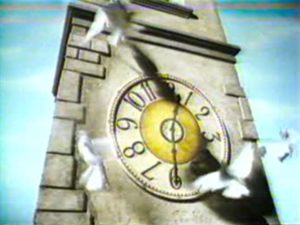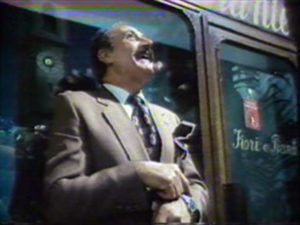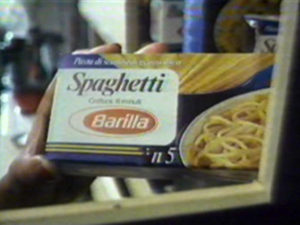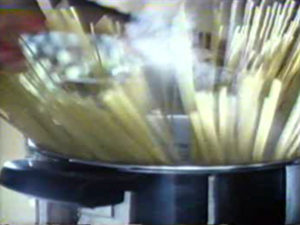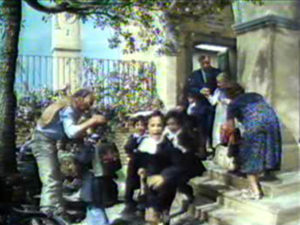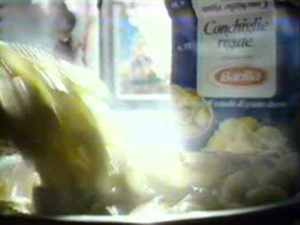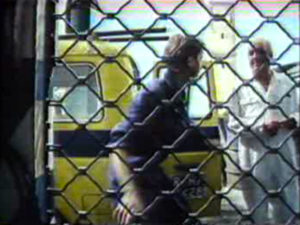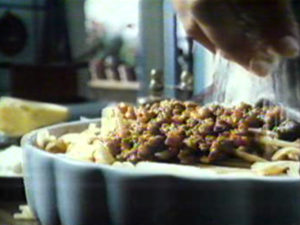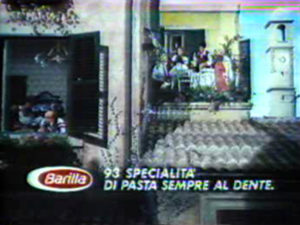Italy of Bell Towers
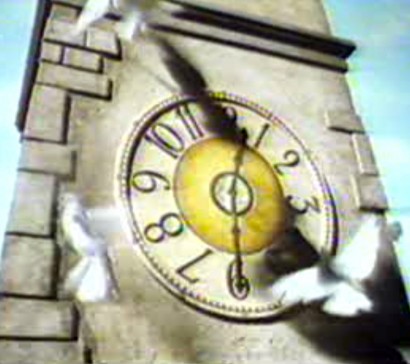
by Emmanuel Grossi
The 1970s can be considered the less dazzling period of the history of advertising campaigns by Barilla. Brothers Giovanni and Pietro had regretfully sold the Company to the American multinational Grace and those were not easy years for Italy as well. There were ruthless contestations, kidnappings, massacres, Brigades, and on very different fronts, food frauds and sophistications. The Carosello program itself had lost its lighthearted character and became every day more and more anachronistic and tarnished. The Company’s energies were absorbed by the launch of Mulino Bianco and communication of Durum semolina was limited to a light cruising mode (except for the last films with Mina and the enjoyable parenthesis with Massimo Ranieri).
With the change of decade, all of the pieces of the puzzle started to get into the right place: Pietro Barilla (flying solo) bought back the Company (a rare if not unique case in the industrial history of Italy) and progressively gave back to pasta the central role it deserved, also on the front of advertising.
TBWA, the new advertising agency under the creative direction of Marco Mignani (who was the author of the relaunch of Voiello), pointed on the revaluation of lunch (Rediscover the taste of midday) as a moment of family cohesiveness, and as the joy of meeting again after a morning of study or work. These were the first steps towards the building of brand value, that later triumphed, under other auspices, with Where there’s Barilla, there’s home.
A series of films lasting one minute was planned for the show Spazio F (that had clumsily tried to supplant Carosello). In these, the daily life of the Italian province was portrayed, in many aspects still tied to rhythms and customs of patriarchal and rural society.
They were filmed by Enrico Sannia, the most genial of Italian advertising directors, with his preferred cinematographer, Claudio Collepiccolo. The work was supervised by producer Stefano Patrizi, who a few years later we will find working as a connection between Federico Fellini (and his entourage) and the producer Fabrizio Capucci.
Set designer Giorgio Luppi recalls that on request by Sannia and Capucci, he had to reconstruct in a filming studio an entire portion of a city: the elementary school, houses (indoor and outdoor scenes), the mechanic workshop, the stores, the town square with the bell tower ringing noon amid a flight of doves… All was realistic and “ready”, available for the different scenes.
Indeed, the bell tower was the central point of action: built in the center of the theater, it was seen in all framings of shooting, at times from below (when the action happened at street level), at times from behind windows (when the camera is shooting indoor scenes on the highest floors of buildings). It can be seen reflected in the window of a flower store, or next to the alternation of solids and space, of roofs and balconies that make it possible to show different family units at the same time, all gathered around their table.
Care for details, mastery of frames, the ability to reconcile cinematic narration with the central role of the product (in accord with the communication strategy), make him a great movie director. With this small series, Sannia one more time demonstrated he was the greatest of them all.
Then, with the Al Dente campaign, there was a passage from the symbolic value of lunch to the central role of the raw material in itself, while Fellini already appeared on the horizon.
